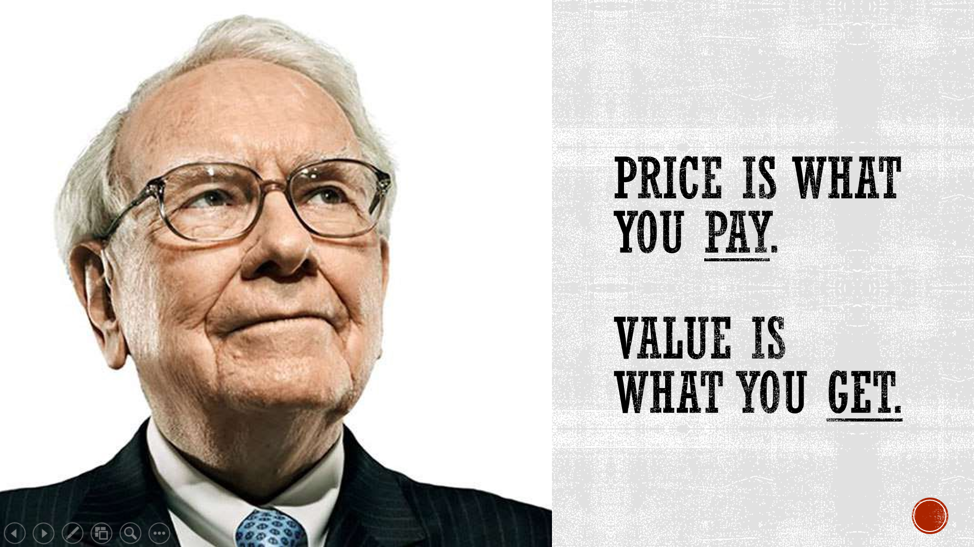My wife shared a meme with me the other day that read as follows:
A man answered an ad that read “Hiring welders $18 to $24 an hour.”
When he arrived he was told he would have to take a welding test. He turned in two sets of welds.
When the boss asked him why he did this he replied, “One is $18 an hour, the other is $24 an hour.”
Here’s the picture that accompanied it:

It’s hard to disagree with the logic here.
The fact of the matter is, it applies to more than just welding.
It applies to every instance under the sun where someone must produce some type of result for another person in return for some form of payment.
And it got me to thinking about some of the people I’ve worked with over the years.
“We launch on Tuesday and we’re on a budget. Can you grab your superhero cape and give us a hand?”
I love people who think I can drop everything, plop down at my desk, rattle off a few pages of copy, and ship ‘em a final draft lickety split.
“Hey Paul, we need a 32-page sales letter for a new product that we’re launching next week. Could you write one for us by Tuesday?”
Those are short-lived conversations.
As in… I won’t even bother to waste my time talking to them.
Successful copywriting (defined as that which produces a measurable, profitable result) is a byproduct of time, effort, skill, talent, expertise, know-how, experience, creativity, psychology and marketing savvy…
… Sprinkled with an occasional dash of glorious, genius-inducing inspiration…
… Plus as my mentor, legendary copywriter Clayton Makepeace, would say — copious amounts of skull sweat!
And here’s the thing…
Some marketers get it. Some don’t.
You can generally tell the ones that don’t get it within the first 30 seconds of talking to them. They make their ignorance of the matter glaringly obvious.
So here’s a little tough love for you…
If you’re a copywriter, avoid these clients like the plague.
Because if you don’t, you’ll find yourself reliving those good ole’ college years…
… Where you busted hump, living off Cheerios and Ramen noodles, shacking up with six of your buddies to save on rent.
Only in this case… after four years, you’ll have absolutely nothing to show for it.
Why is copywriting so #$@&%* expensive and why does it take so #$@&%* long?

I’m reminded of what another legendary copywriter, Gary Bencivenga, is fond of saying.
To paraphrase…
“I can write better than anyone who can writer faster, and faster than anyone who can write better.”
In other words, copywriting is an inverse scale.
Generally speaking…
The more time you put into it, the better your copy will be.
The less time you put into it, the more your copy will suck.
You can’t rush results.
Experienced copywriters know this, and they plan and charge accordingly.
Experienced business people know this, and they plan and expect to pay accordingly.
That said, let’s dig a little more deeply into the cost component.
Good copywriting ain’t cheap …
A number of factors contribute to the cost of copywriting.
The primary factor, of course, being the copywriter and the writing time itself.
As we already saw… copywriters vary as far as their skill, knowledge, experience, expertise, talents, abilities, etc, etc.
The greater the supply of these factors, the greater the cost of the copy.
But also, generally speaking… the better the result and the greater the sales.
Some of the other factors include:
● Research — Product research, prospect research, market research, client research, regulatory and legal compliance, fact checking, etc.
● Strategy Development — Buyer psychology, sales and marketing strategy, communications strategy, testing and contingency strategies.
● Creative Direction — Including structural and conceptual and development.
● Emotional Response — Analyze, evaluate, enhance, finetune.
● Layout and Graphics — Editing to match copy and overall layout.
● Technical — Check and correct syntax, grammar, spelling, etc.
● Fine Tuning — Strategies and copy.
● Client Approval — Verify that requested changes are legitimate for creative, technical strategic or regulatory reasons. No personal tastes.
Of course, all of this will vary depending on the project at hand.
The factors that are required to produce an email will be quite different from those that are required to produce a major 24-page, tabloid-size direct mail piece.
So now, let’s dig a little more deeply into the time component.
Good copywriting ain’t like slicing open an artery and bleeding on the page …
 Writing great sales copy is part art, part science.
Writing great sales copy is part art, part science.
Art in that there is a natural rhythm and flow to great sales copy.
Science in that there are specific, proven and time-tested principles, techniques and strategies for writing great copy.
Fortunately, the fundamentals never go out of style.
Human nature is unchanging, and so are the basic tenets of copywriting.
There’s just one small problem…
The average successful copywriter has spent thousands — if not tens of thousands — of hours studying these fundamental principles and techniques, and practicing the craft, to learn how to write effective copy…
… And to get to where they can do so with both precision and speed.
If you’re inexperienced, you can fumble in the dark for days and get nowhere.
Here’s just some of what you need to know how to do:
● Research the client, product, prospect and market
● Develop a core “Big Idea” that intrigues your target prospects
● Write a headline that seizes the attention of your target prospects
● Target and trigger your prospect’s most powerful emotions
● Present ideas in a clear, logical, easy to follow way
● Present benefits in a way that makes prospects lust after the product
● Prove every promise you make so the copy is believable
● Write irresistible bullets and fascinations
● Create an offer that prospects can’t refuse
● Seal the deal with a powerful close
Well, you get the point.
Does it take time to do all this properly? You bet it does!
Let me give you a quick example…
The copywriters at publishing behemoth, Agora Financial — whose copy is among the best in the world, and is responsible for over ONE BILLION DOLLARS per year in sales — take two months to write a single promotion.
They take six weeks to research, develop a big idea and theme, and write a headline and lead… followed by another two weeks to flesh out the rest of the promotion.
What’s more, that’s merely the first draft!
Think about that the next time you want to rush through a project.
Oh yeah, and one more thing …
English professors need not apply …
A special note for all you grammar nazis…
I know “ain’t” ain’t a proper word.
I purposely threw that landmine in here to weed you out.
You see, buried in this English-professors-love-to-hate-it word is an important lesson about writing great copy:
You’ve got to write sales copy like people talk… and the way people talk is far from all that prim-and-proper grammar stuff.
So if you’re an English professor, don’t quit your day job.
English majors make terrible copywriters.
Thanks for your words of wisdom — and reality!
Don’t you think that relatively few people say “ain’t” these days? On the other hand, I notice that most people say “there is” (or there’s} for “there are” (or “there’re”). I would never write that the wrong way, would you?
Best Regards,
Dr. Debby
Hi Paul,
Thanks for this article. What is your advice for new copywriters? How should they learn the craft and get clients? Any specific actionable advice? Thanks again.
As always, great stuff! (Did I really say stuff?) I meant to say I got a wealth of ideas I can put into practice immediately. Thank you for these amazing tidbits of wisdom. As soon as I get busy I intend to make a ton of money. LOL